
“Ein Märchen aus uralten Zeiten, das kommt mir nicht aus dem Sinn…”
Heinrich Heine’s Lorelei lingers like a spell, and so does this year’s Discovery Art Fair in Frankfurt. Walking through its corridors reveals a thread: a dreamscape of modern fairy tales, seductive, strange, and at times unsettling.
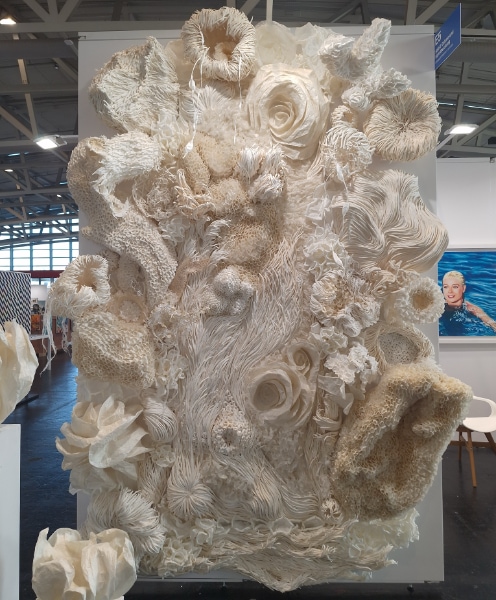
Philine Görnandt
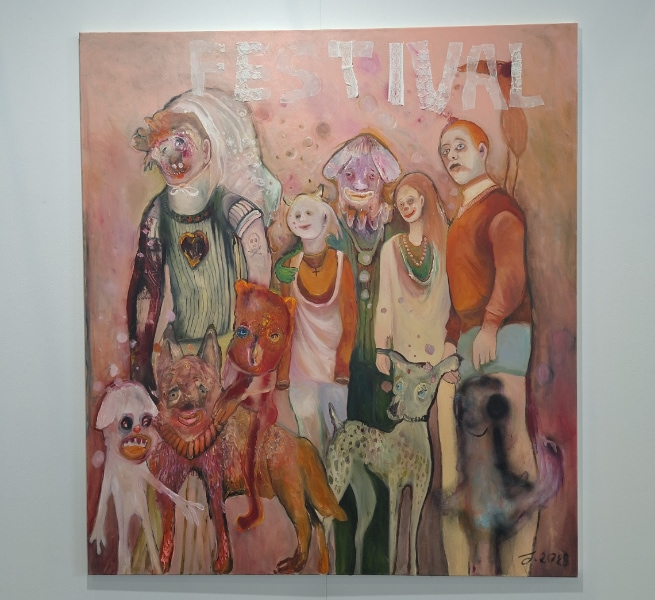
Juliane Hundertmark
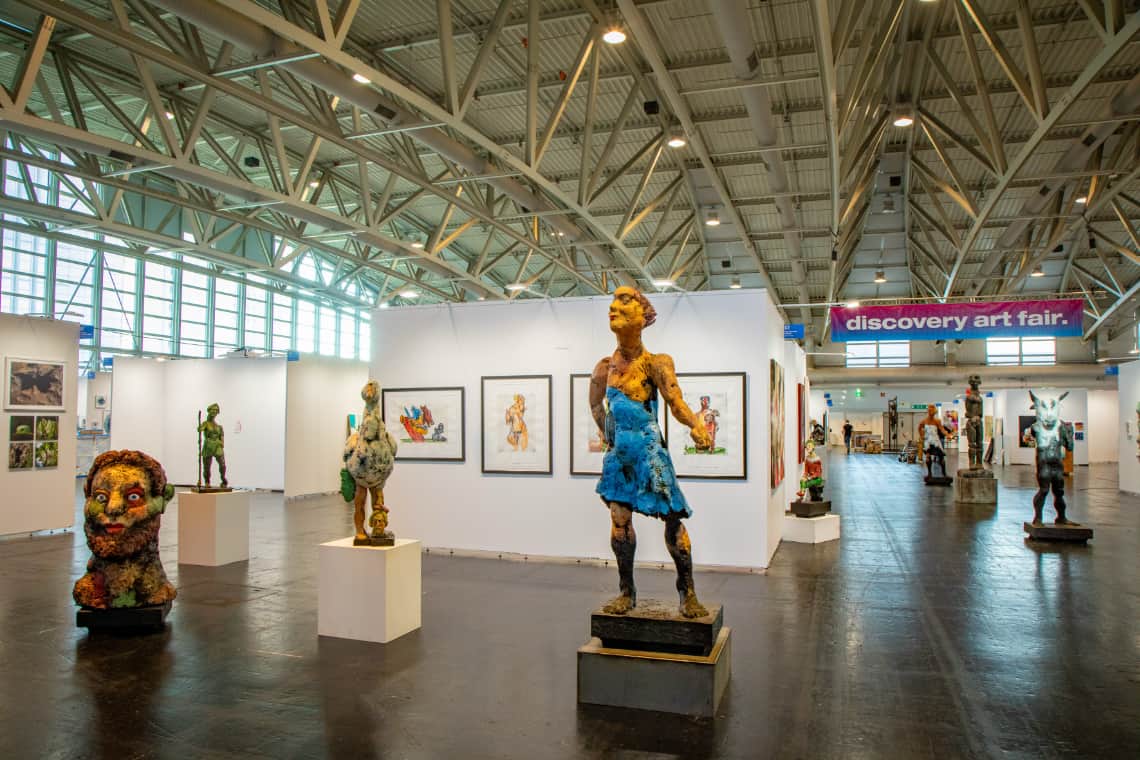
Entrance hall with M. Luperz sculptures, by Holger Peters
Where the Fairy Tale Begins
The journey begins with Markus Lüpertz’s sculptures, towering at the entrance like the twisted trunks of a haunted forest. They are imposing, hybrid beings, both human and animal, gods and monsters merged. From afar, they appear as a dark grove, the kind the Brüder Grimm might have warned us about. They don’t welcome; they challenge. Their presence reminds us that every story of wonder begins with unease.
Just a few steps inside, the air changes. Philine Görnandt’s paper worlds shimmer in delicate white. Intricate, weightless landscapes of flora and movement. Her art feels like stepping into a snow-laden dream, where everything fragile holds its own quiet power.
Then comes Juliane Hundertmark, whose painted scenes of “life unmasked” tear through the illusion of safety. Her works are carnivals of the grotesque: familiar faces distorted by laughter and fear, beauty twisting into absurdity. Like the moral tales of old, they reveal what hides behind charm: a mirror too honest to ignore.
Myths Beyond Borders
The fair’s international pulse beats strongly this year, and nowhere more vividly than at the Artertain Gallery from Seoul. Their booth feels like a fever dream drawn from Korean folklore, filled with beings that feel both alien and intimate. We may not know their stories, yet the emotion is immediate: fascination, dread, curiosity. These works remind us that mythology speaks in universal symbols, even when its language is foreign.
At the far edge of the hall, a single creature waits in silence. Stefan Perethoner’s “Giraffe,” shown by Vijion Gallery, is a sylvan hybrid, part guardian, part wanderer. It’s calm, almost nymph-like stillness feels like the pause between chapters in a fable, when the forest itself seems to hold its breath.
Wolfgang Schaper adds a note of quiet nostalgia. His “Forgotten Dance,” an elegant single shoe, glows like an artifact from a dream. It could be Cinderella’s lost slipper, or simply the trace of a story left behind. His works, often steampunk portraits of imagined histories, are time machines of emotion: poetic, melancholic, and human.
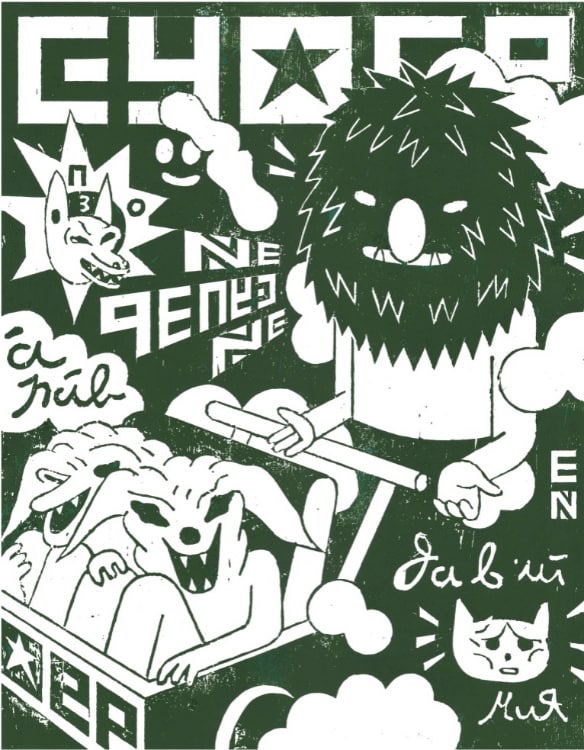
Roman Klonek, Artertain
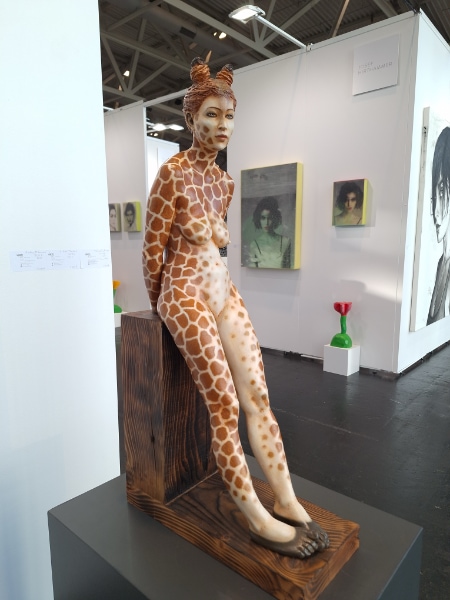
Stefan Perethoner – Giraffe

Wolfgang Schaper – Forgotten Dance
Between Beauty and Beast
Not far away, “princesses” appear in many forms. Olaf Jahnke paints them in classical grace, timeless faces of poise and light. Hundertmark’s “Little Princess,” however, bares her teeth: a wolf in a tiara, a distorted echo of innocence. Together, they stage the eternal dance between beauty and beast, purity and instinct.
Aare Freimann’s clay creatures feel plucked from strange parables, odd, tender, and slightly misplaced. They pose for us as if trying to recall the tales they once belonged to. Elda Serenade, on the other hand, embraces the language of fairy-tale symbolism directly: apples, flowers, radiant heroines. Her polished compositions tap into archetypes that need no translation.
The narrative continues with Nam Yi Hyung’s animal worlds, where friendship blooms across species boundaries. In one work, a bunny rides a goose as if crossing into another realm. In another, titled Symbiosis, a pig, polar bear, tiger, and penguin coexist in unlikely harmony: a playful, touching vision of connection that recalls Aesop’s Fables and their quiet moral wisdom.
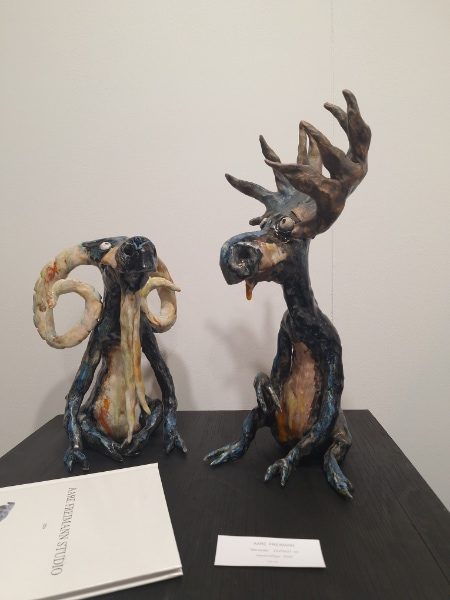
Aare Freimann
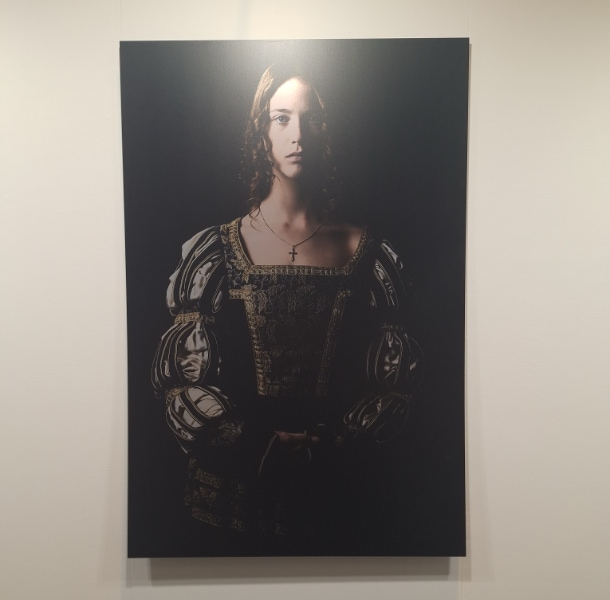
Olaf Jahnke

Nam Ji Hyung – Symbiosis
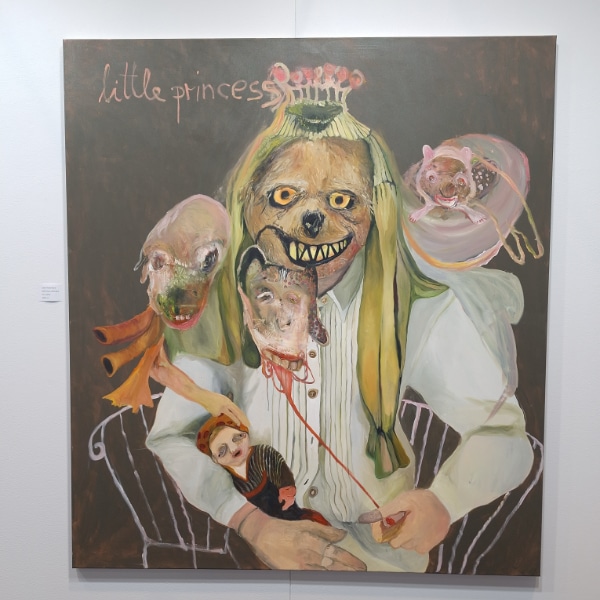
Juliane Hundertmark – Little Princess
Ancient Flames and Northern Shadows
Rashad Mehdiyev, presented by Galerie Ismayilov, turns to Azerbaijani miniature and Persian mythology for inspiration. His Simurgh, the mythical phoenix, burns bright as a symbol of rebirth and remembrance, connecting ancient heritage with the universal human urge to transcend.
Nearby, the booth of STALOWA Art Gallery feels like opening a richly illustrated storybook. Kamil Stańczak offers dreamlike visions of floating figures, peaceful, weightless, caught between waking and sleep. Alongside him, Natasza Mirak contrasts that serenity with works of striking emotional intensity: beauty and ache intertwined, culminating in the haunting Nachricht aus dem Norden, a raven-shadowed message from a darker realm.
Even photography joins the chorus of fables. Claudia Otto at Alte Bäckerei reveals a subtle witchy presence in one image, a whisper of the supernatural within the everyday. In another, she reimagines the fable of The Fox and the Grapes without either fox or grapes, only a woman wearing grapes as a crown, as if to suggest the fruit was never out of reach at all.

Natasza Mirak -Nachrichten aus dem Nord

Kamil Stanczak

Rashad Mehdiyev -Simurgh

Claudia Otto
The Return of Wonder
As the fair draws to a close, one senses the arc of a story completed. From darkness to wonder, from horror to hope, the halls of the Discovery Art Fair have become a landscape of imagination: a collective Märchen written by many hands.
And perhaps that’s the true magic of it: to remind us that while our cultures differ, the dream is shared.
Because in art, as in fairy tales, we return to the same truth: that imaginary monsters are often far less frightening than the real ones.
The Discovery Art Fair Frankfurt runs until November 9, 2025 — step into the story while it’s still being told.
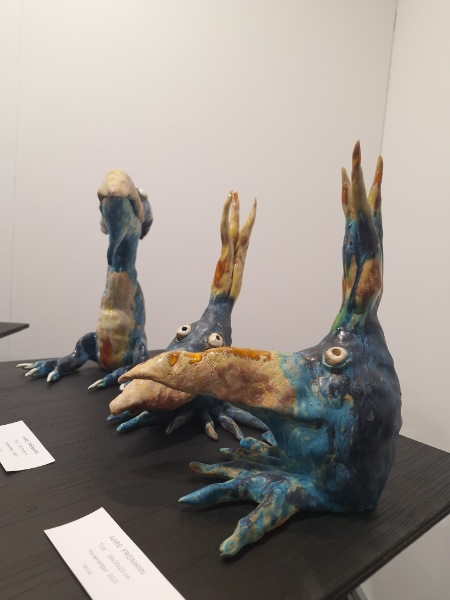
Aare Freimann


